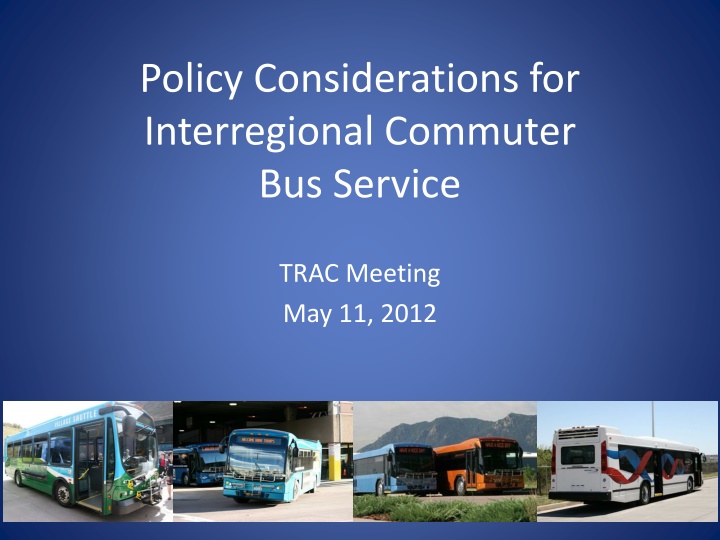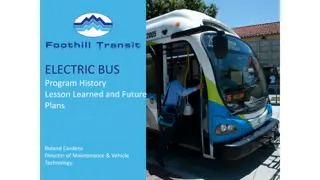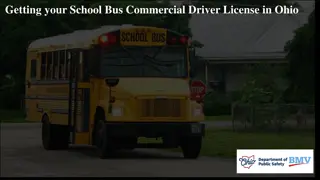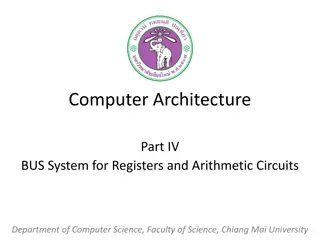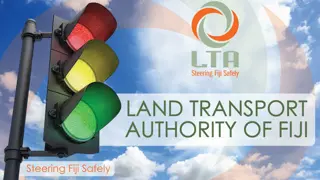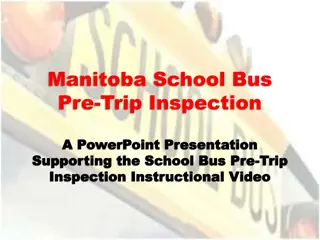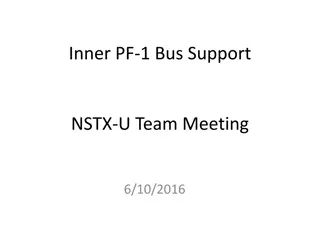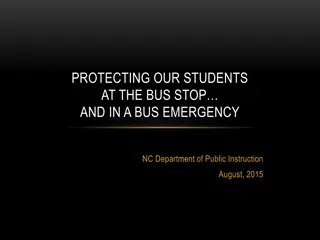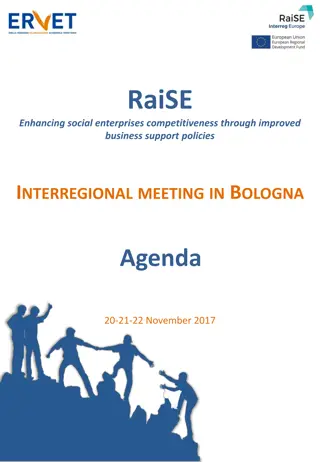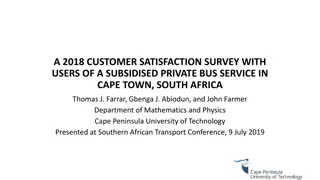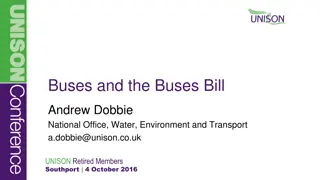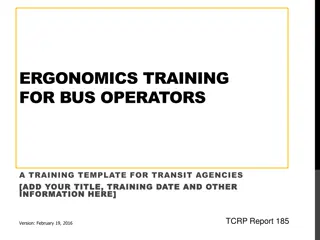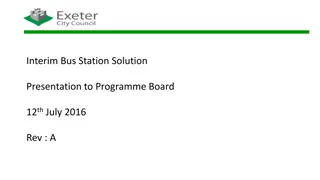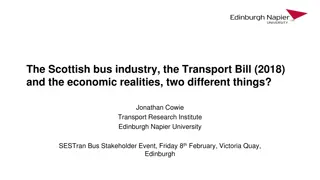Policy Considerations for Interregional Commuter Bus Service
This document outlines policy considerations for enhancing interregional commuter bus services, focusing on increasing mobility, connectivity, and access to employment while promoting energy-conserving options and filling transit gaps. It covers general concepts, service/mobility concepts, funding scenarios, potential routes, development partnerships, and other service issues.
Download Presentation

Please find below an Image/Link to download the presentation.
The content on the website is provided AS IS for your information and personal use only. It may not be sold, licensed, or shared on other websites without obtaining consent from the author.If you encounter any issues during the download, it is possible that the publisher has removed the file from their server.
You are allowed to download the files provided on this website for personal or commercial use, subject to the condition that they are used lawfully. All files are the property of their respective owners.
The content on the website is provided AS IS for your information and personal use only. It may not be sold, licensed, or shared on other websites without obtaining consent from the author.
E N D
Presentation Transcript
Policy Considerations for Interregional Commuter Bus Service TRAC Meeting May 11, 2012
General Concepts Increase mobility and connectivity between regions Increase interregional access to employment Provide energy-conserving options to long- distance SOV commuting Fill in the gaps between transit systems
Service/Mobility Concepts Service between transit systems Provides connectivity to local services Not intended to replace service within existing RTA/Agency service areas (e.g., Boulder-Denver, Glenwood-Aspen, Fruita-Grand Junction) Start small with options for expansion Initially provide am/pm peak-period service Expand based on demand and finances Manage by performance Develop criteria to determine eligibility for operating assistance Use performance measures to adjust service over time
FASTER Funding Concepts CDOT owns buses (FASTER capital funds) CDOT contracts for service IGAs with public providers Direct contracts with private providers FASTER state transit funds used for O&M
Funding Scenarios Allocate $2M (approximately 22%) of FASTER funds for interregional bus operations At what level does CDOT fund service routes? 20% to 50%? More? Less? Requires revision to TC Resolution and FASTER Guidance Match Local/Regional 20% to 40% In-kind, fare box, other Federal 20% to 40% Possible match requirements are adjusted Start-up vs. on-going
Potential Routes Colorado Springs Denver Fort Collins Possible extensions to Pueblo and/or Greeley Grand Junction Glenwood Springs Possible extension to Dotsero Conceptual criteria for other routes: High congestion corridors High ridership corridors Future rail corridors Network connectivity (connections to activity centers, metro areas, other routes, gaps in service, etc)
Develop Partnerships Potential Partners: MPOs and TPRs Local Jurisdictions Local Transit Providers RTAs Others Develop IGAs Operations Maintenance Others
Other Service Issues Number of Buses Hours of Operation Frequency of Service Number of Trips Number and Location of Stops Fare structure Bus Maintenance and Storage Marketing
